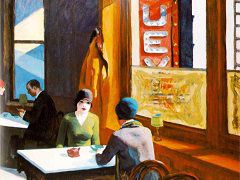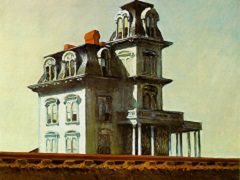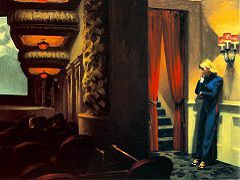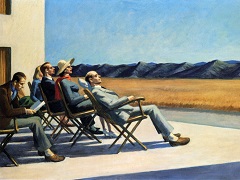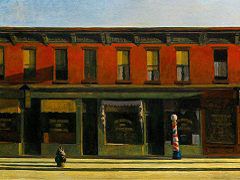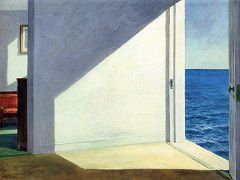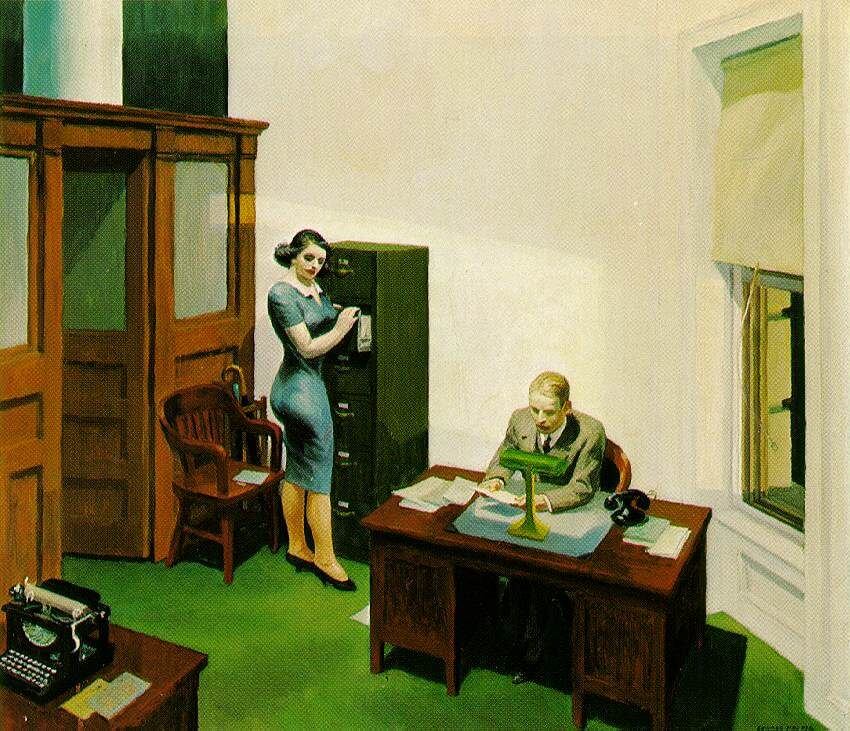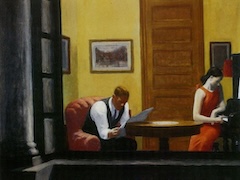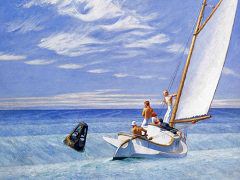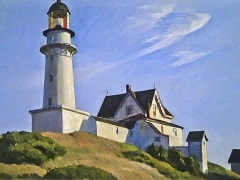High Noon, 1949 by Edward Hopper

In an often-quoted statement made to Lloyd Goodrich, perhaps prompted by the torment of having to comply with editors' demands to depict "people waving their arms," Hopper admitted: "Maybe I am not
very human. What I wanted to do was to paint sunlight on the side of a house."
The human quality was no more alien to Hopper than to Vermeer , to Edgar Degas, or to
Edouard Manet. But Hopper did not necessarily need the human figure to express it. He may not have been a born painter of figures, but human nature was as familiar
to him as to any twentieth-century artist.
Edward Hopper's figures are often alone, staring out of a window, sitting at a café table or standing on the porch of a New England house looking out at the ocean. High Noon is such a picture:
an anonymous woman is seen in the doorway although we have no idea why. Is she waiting for someone? Or simply looking out on the day? There is no sense of any activity; she is still and surrounded
by a large house that is struck by sunlight, leaving dramatic shadows on the roof and walls.



